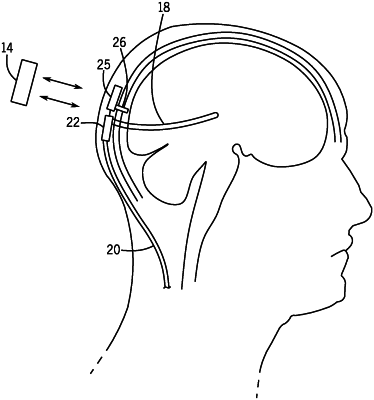| CPC A61M 27/006 (2013.01) [A61M 2202/0464 (2013.01); A61M 2205/3331 (2013.01); A61M 2210/0693 (2013.01)] | 21 Claims |

|
1. A cerebral shunt used to treat an abnormal accumulation of cerebrospinal fluid (CSF) in a brain of a patient, comprising:
a catheter adapted for implantation within the brain of the patient with a proximal portion within the brain opposite a distal portion diverting CSF out of the brain to another region of the patient;
a pressure sensor adapted for implantation within the brain of the patient and producing a signal representing an intracranial pressure;
a valve connected to the catheter to conduct excess CSF to drain out of the brain through the catheter in an open position and to prevent the excess CSF from passing out of the brain through the catheter in a closed position; and
a valve driver control circuit communicating with the pressure sensor and the valve and operating to receive the signal representing the intracranial pressure and to control the valve to switch the valve between the open position and closed position in a cycle for successive cycles so that
(i) the valve is closed when the measure of intracranial pressure is below a predetermined threshold value; and
(ii) the valve is switched between open and closed during each cycle at all intracranial pressures above the predetermined threshold value to allow a period of tissue relaxation between periods of drainage
wherein a relative time that the valve is in the open position versus the closed position is a function of intracranial pressure.
|